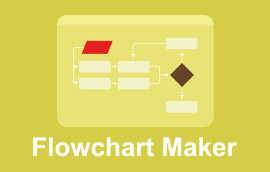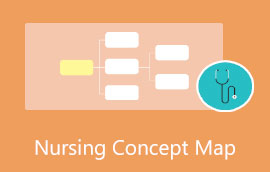Flat Organizational Structure: Cut the Gordian Knot
In today's fast-paced business world, companies are constantly exploring innovative ways to enhance efficiency and foster collaboration. One approach that has gained significant attention is the flat organizational structure. Unlike traditional hierarchies, this model emphasizes minimal levels of management, aiming to create an open and dynamic work environment. But what makes the flat structure so appealing to modern enterprises? Could it be the promise of empowering employees, speeding up decision-making, or encouraging creativity by breaking down barriers?
As we delve into the intricacies of this organizational design, we'll explore how it challenges conventional norms and redefines leadership roles. We'll also examine its impact on communication, employee satisfaction, and overall productivity. Whether you're a business leader seeking to transform your company culture or an employee curious about new organizational trends, understanding the flat structure offers valuable insights into the evolving landscape of workplace dynamics. Come on and follow us. We will uncover the potential benefits and challenges of adopting a flat organizational structure and discover why it might be the right fit for your organization.

- Part 1. What is a Flat Organizational Structure
- Part 2. Flat Organizational Structure Advantages and Disadvantages
- Part 3. Flat VS Tall Organizational Structure
- Part 4. Flat Organizational Structure Example
- Part 5. FAQs of Flat Org Model
Part 1. What is a Flat Organizational Structure
A flat organizational structure is a kind of business framework characterized by minimal hierarchical levels between management and employees. In this model, traditional layers of middle management are reduced or eliminated, creating a more egalitarian workplace where employees have greater autonomy and direct access to decision-makers. This structure fosters an open communication environment, allowing ideas and feedback to flow freely across all levels of the organization. Employees often enjoy increased responsibility and empowerment, as they are encouraged to take initiative and contribute to decision-making processes. It can handle creativity and innovation, as team members feel valued and motivated to share their insights.
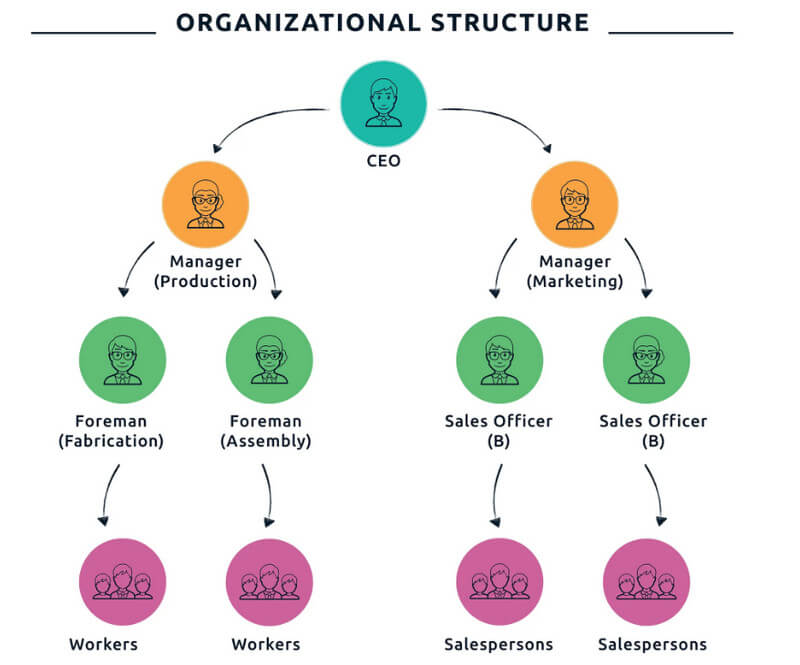
However, the flat structure also presents challenges. Fewer defined roles and levels of supervision can sometimes lead to ambiguity in responsibilities and decision-making authority. Additionally, as organizations grow, maintaining a flat structure may become complex, potentially impacting efficiency and coordination. Overall, a flat organizational structure can be highly effective for fostering a collaborative and flexible work environment, particularly in smaller companies or startups that thrive on creativity and rapid change.
Part 2. Flat Organizational Structure Advantages and Disadvantages
Advantages
A horizontal organizational structure is considered extremely beneficial to a company. One key reason is enhanced communication. With fewer layers of management, information can be conveyed more freely between employees and leaders, fostering a culture of openness and transparency. This can lead to quicker decision-making and more agile responses to market changes. Employees often feel more empowered and valued, as they have direct access to top management and the opportunity to contribute ideas and feedback.
Another advantage is increased employee satisfaction and motivation. In a flat structure, individuals are typically given more autonomy and responsibility, allowing them to take initiative and drive projects. This sense of ownership can boost morale and encourage innovation, leading to a more dynamic and engaged workforce.
Disadvantages
The flat organizational structure, nevertheless, also has its disadvantages. One potential drawback is the lack of clearly defined roles and responsibilities, which may cause confusion and overlap in duties. Without traditional hierarchies, it can be challenging to establish authority and accountability, potentially resulting in conflicts or inefficiencies.
Additionally, as organizations grow, maintaining a flat structure can become complex. Larger companies may struggle with coordination and consistency, as the absence of middle management can make it difficult to manage a large workforce effectively.
Part 3. Flat VS Tall Organizational Structure
When comparing flat and tall organizational structures, key differences emerge in management style, communication, and employee autonomy.
A flat organizational structure features minimal hierarchical levels, promoting direct communication between employees and leadership. This model fosters a collaborative environment where employees often have more responsibility and are encouraged to take initiative. It can lead to increased innovation and quicker decision-making, as fewer layers mean faster information flow. However, it may also result in unclear roles and challenges in managing larger teams.
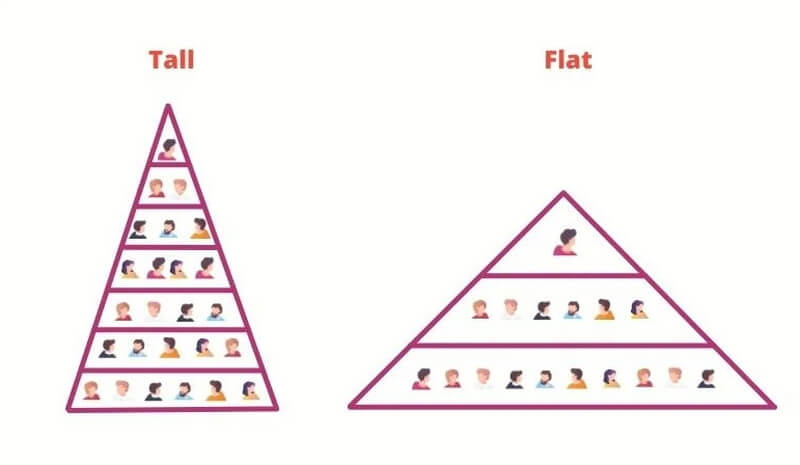
In contrast, a tall organizational structure is characterized by multiple layers of management, providing a clear chain of command and well-defined roles. This can enhance organization and control, making it easier to manage large numbers of employees. The structure supports thorough oversight and accountability, which can be beneficial for maintaining standards and consistency. Yet, the added layers can slow down decision-making and limit direct communication, potentially stifling creativity and responsiveness.
Ultimately, the choice between flat and tall structures depends on an organization's size, goals, and culture. Smaller companies or startups may thrive with a flat structure that encourages agility and innovation. Larger organizations, needing clear oversight and defined roles, might benefit from a tall structure. Balancing these models can help organizations leverage both strengths to achieve their strategic objectives.
Part 4. Flat Organizational Structure Example
MindOnMap stands out as a dynamic and versatile online mind-mapping tool, empowering users to visually structure their ideas, thoughts, and information intuitively and engagingly. The platform's understandable UI simplifies the process of mind map creation, allowing users to start from scratch or leverage pre-designed templates for a head start. MindOnMap doesn't skimp on features. Users can enrich their mind maps with text, images, icons, and hyperlinks, constructing multi-layered visual representations that capture the nuances of complex topics. This makes it an ideal tool for a variety of tasks, from brainstorming for new projects and planning presentations to dissecting complex information and fostering deeper understanding.
More importantly, MindOnMap excels not only in its powerful features but also in its intuitive controls and flexible sharing options. Users can not only tailor the appearance of their mind maps but also share them with others, facilitating clear and effective communication. Whether you're an individual seeking to boost personal productivity or a team aiming for enhanced collaboration and knowledge organization, MindOnMap proves to be an invaluable asset. So, we will use this outstanding free mind-mapping tool to build a flat organizational chart. You may follow the steps below.
Secure Download
Secure Download
You can get access to MindOnMap's official website or download the app. When you enter the interface, first choose "New" and then click "Mind Map".
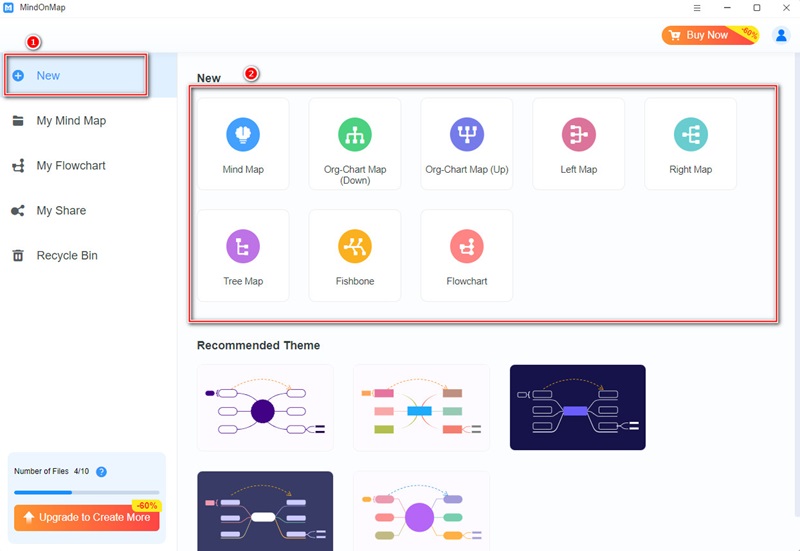
This intuitive interface is packed with features to streamline the creation and editing of your organizational chart. Start by establishing a central figure, such as a boss or manager, within the "Topic" field. From there, build out your chart by adding subordinate branches, like individual employees, by selecting the main topic and clicking "Subtopic." To represent multiple tiers within the organization, simply select a subtopic and click "Subtopic" again to add another layer. MindOnMap further empowers users with tools like "Link" for connecting related entries, "Image" for incorporating visuals, and "Comments" to embed notes and explanations directly within the chart.

You can export your work after finishing it by clicking "Save". After that, it will be saved in several ways: PDF, JPG, Excel, etc. Also, you can share your work with others by choosing the "Share" button.
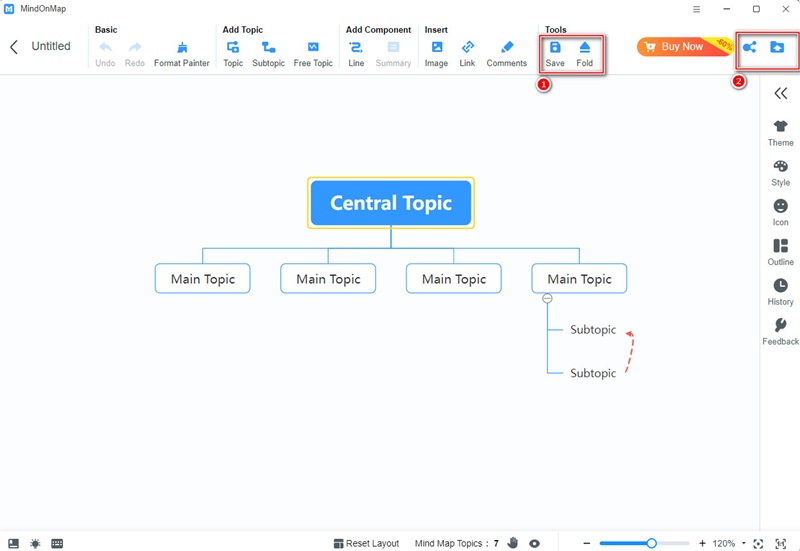
Part 5. FAQs of Flat Org Model
Why are organizations becoming flatter?
There are several reasons for this: Improved communication, increased agility, enhanced innovation, cost efficiency, and employee empowerment.
What is a flat organizational structure for a startup?
It is specialized in minimal hierarchical levels, promoting a collaborative and flexible work environment. In this model, decision-making is decentralized, allowing employees to have more autonomy and direct access to leaders.
Why don't flat hierarchies work?
It also has some drawbacks: High demand for leadership, uncontrolled hierarchy formation, lack of career growth, etc.
Conclusion
This time, we have discussed a few parts of a flat organizational structure, including its pros and cons, comparison with a tall structure, and so on. We hope you found your answer after reading it. Meanwhile, you can view more of our articles down below.










